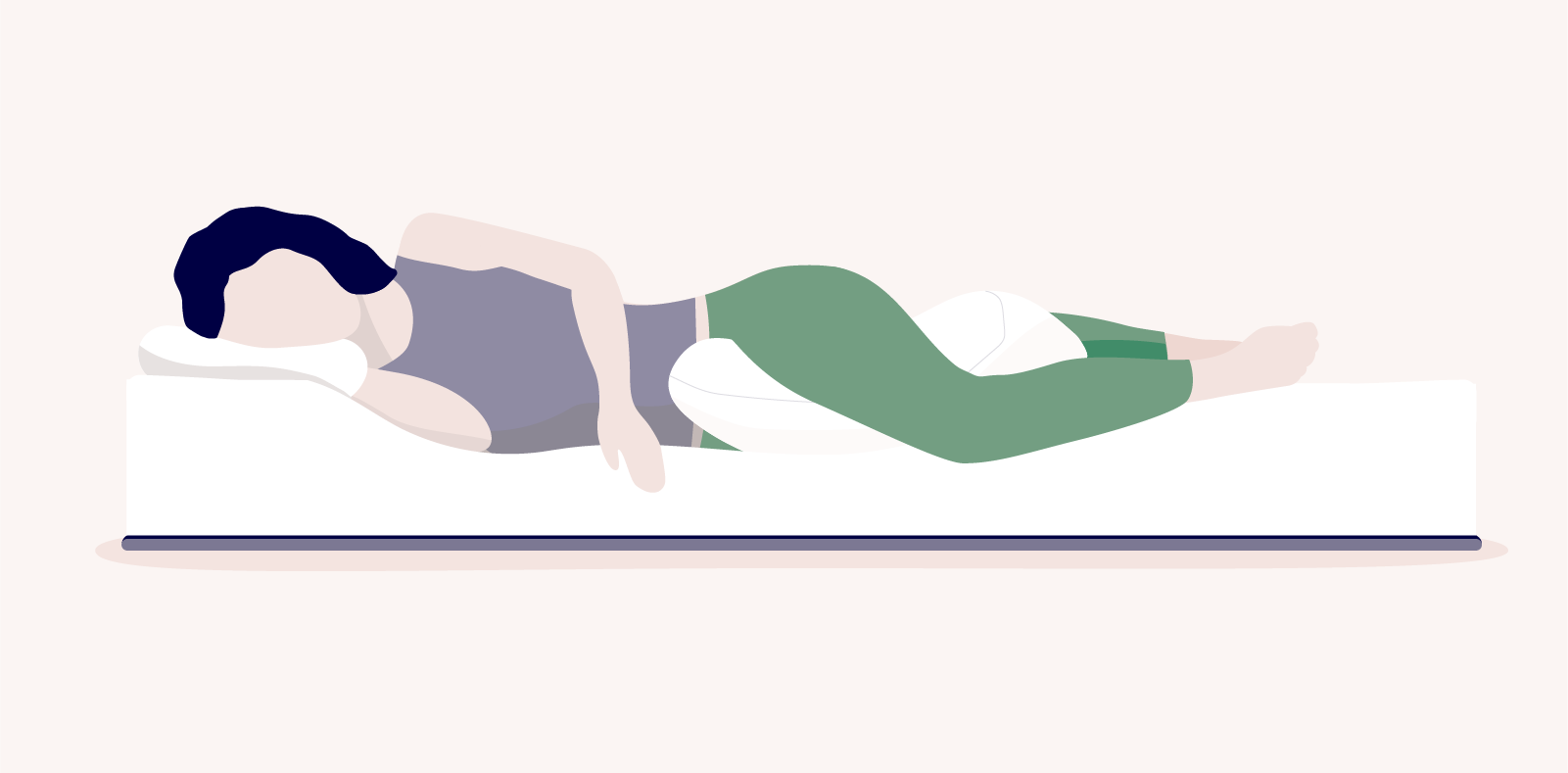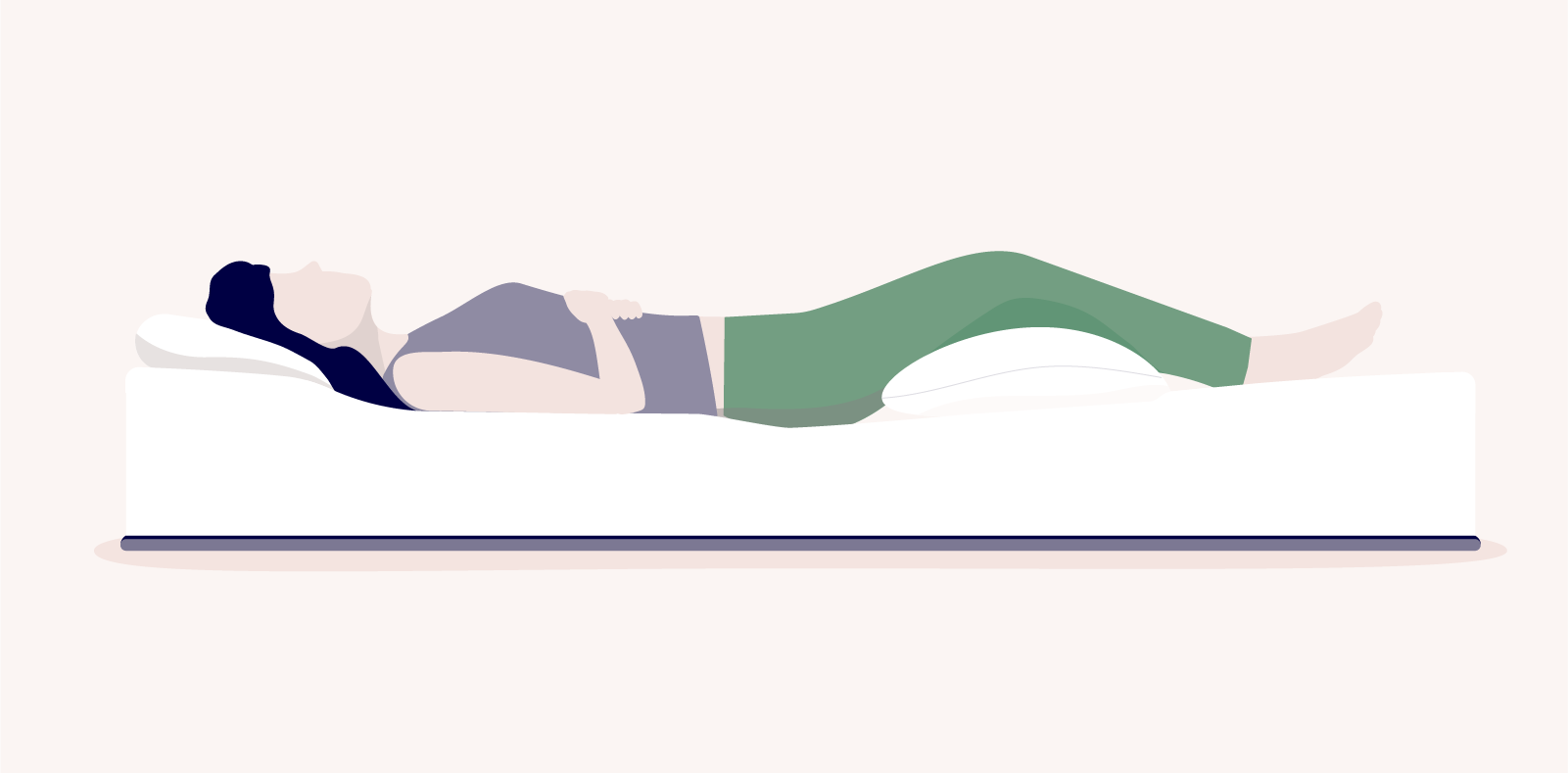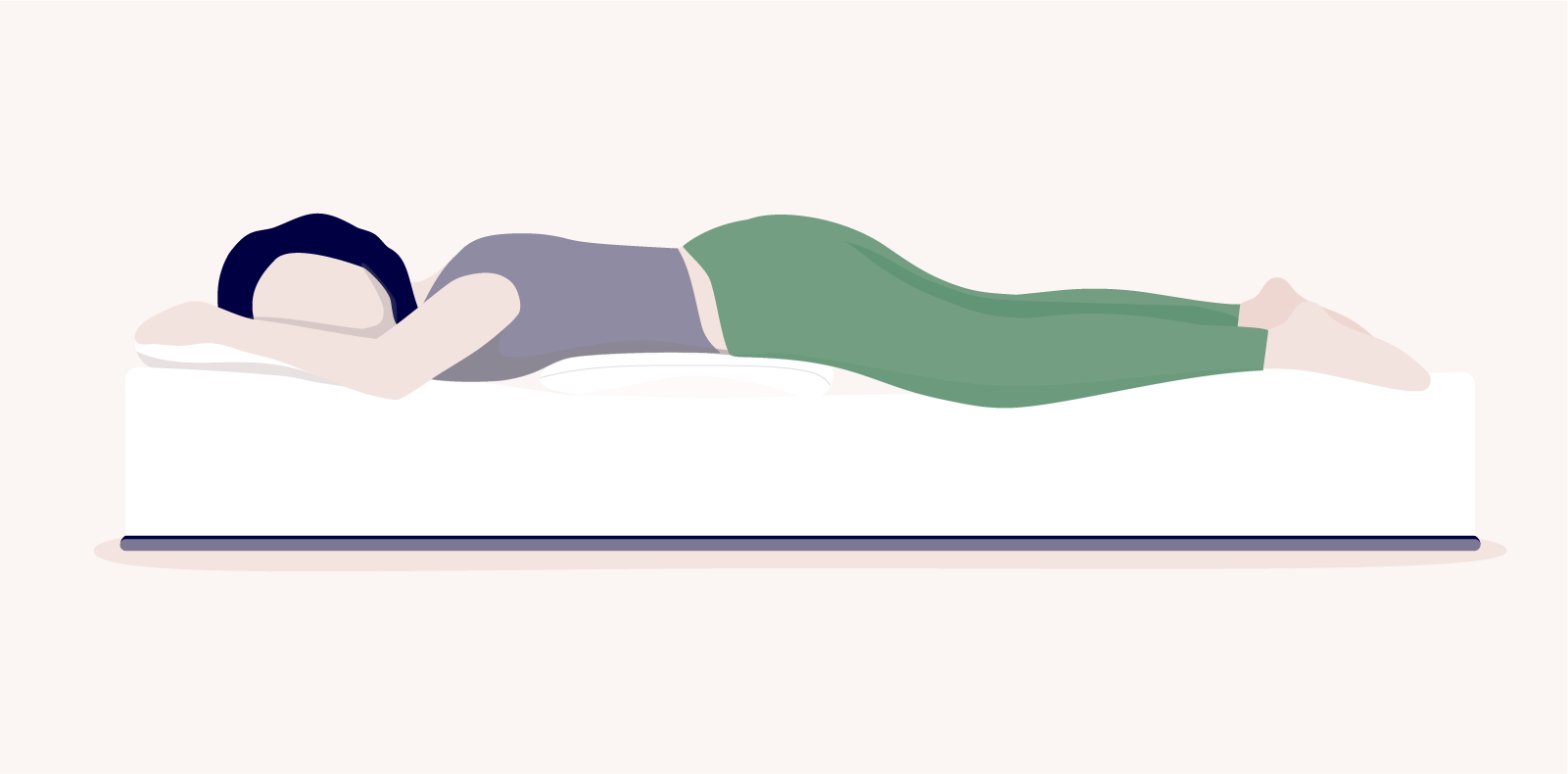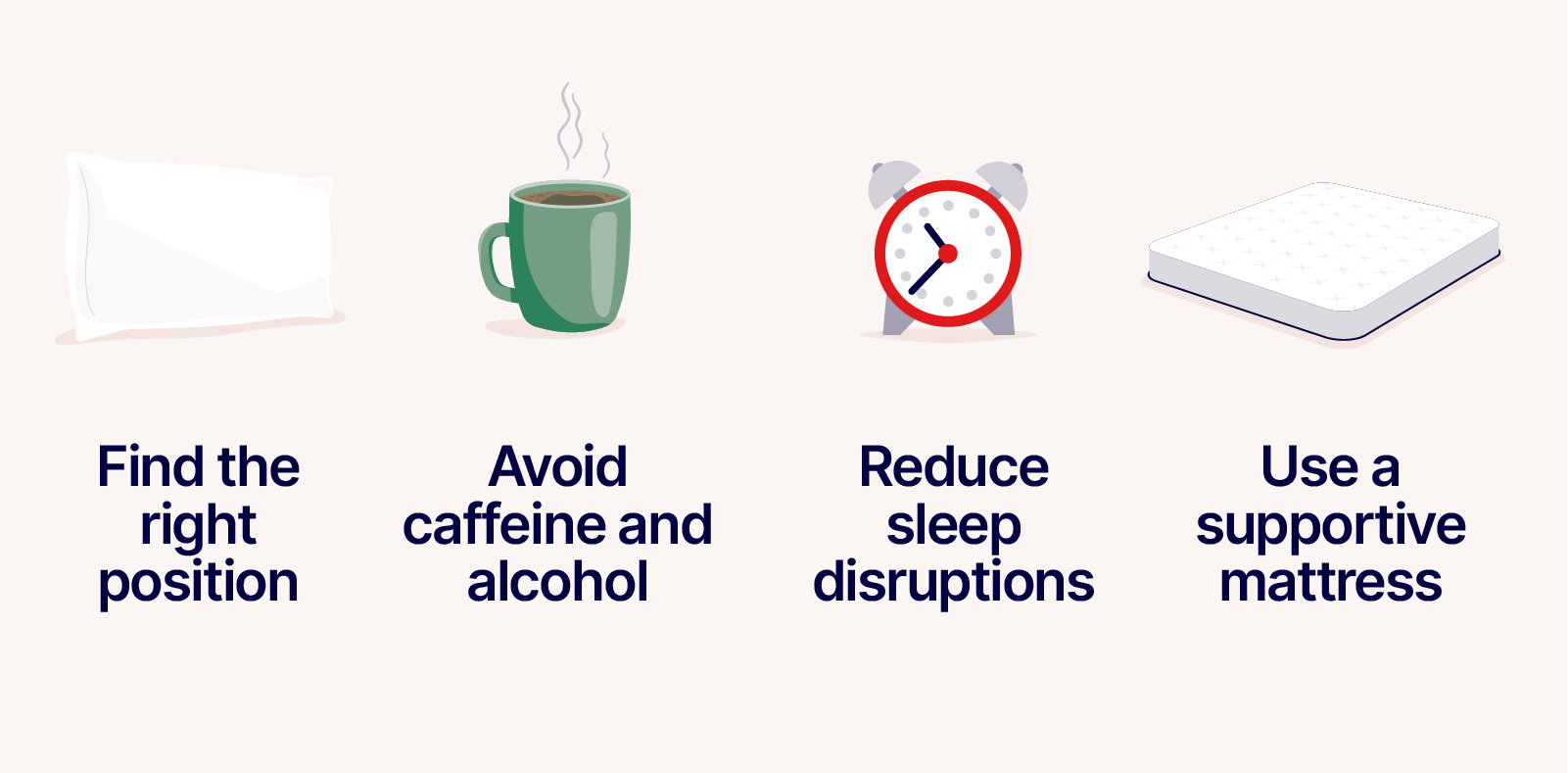Best Sleeping Position For Lower Back Pain (2025)
Updated: March 3, 2025 | Published: July 2, 2024When you live with lower back pain, it makes getting a good night’s sleep difficult. There’s substantial evidence to suggest that chronic lower back pain is associated with poor sleep quality (Kelly et al. 2011, 178). But with the right sleeping position, it’s possible to find the relief that you and your back need.
In this article, we’ll show you the best position to sleep in for lower back pain, depending on whether you’re a side, back, or stomach sleeper. Each position uses a pillow to keep your spine aligned while you sleep.
We’ll also explore habits that can help you sleep better, what kind of mattress is best for back pain, and when to consult your doctor about your pain. Keep reading to discover the best sleep positions for lower back pain.
We co-authored this article with Dr. James Keung, a dedicated healthcare provider with expertise in chiropractic care and massage therapy. The following tips, including those from Dr. Keung, are general recommendations and aren’t meant to replace your doctor’s professional diagnosis. Always consult your physician before trying these sleep positions at home.
1. Sleeping On Your Side

If you’re a side sleeper, avoid lower back pain by keeping your hips and shoulders “stacked.” That means the shoulder and hip on the bed are directly positioned beneath the shoulder and hip facing up. Putting a pillow between your legs can help you stay in this position while you sleep. It can also maintain a more neutral position for your spine.
This position provides both support and pressure-point relief to the joints on either side of your body. Misaligned shoulders and hips can cause stress on the joints, which in turn put stress on the spine and lower back.
You can also sleep on your side with your legs folded and tucked close to your torso. Known as the fetal position, this position uses your upper legs to take the strain off your lower body. It can also be helpful for pregnant women in earlier trimesters, since this position reduces strain on the body’s midsection.
Sleeping with a pillow isn’t necessary when lying on a bed in the fetal position, but it can help reduce potential strain on your knees.
READ MORE: Get our list of the best mattresses for side sleepers
| Dr. Keung’s Tip: |
|---|
Check to see if the pillow used to support your head/neck is high enough to keep your head/neck aligned with your spine. |
2. Sleeping On Your Back
 Sleeping on your back is a simple way to evenly relieve pressure in your shoulders, hips, and pelvis. This helps to take away strain on your lower back.
Sleeping on your back is a simple way to evenly relieve pressure in your shoulders, hips, and pelvis. This helps to take away strain on your lower back.
If you notice even more pain when you sleep on your back, this could be because your body’s natural curvature is arching your spine. You may be able to relieve this pressure and keep your back aligned by sleeping with a pillow underneath your knees.
Make sure the pillow beneath your head keeps your neck aligned with your chest and back. This helps to avoid any strain caused by uneven pressure along your body’s vertical length. You can also use an adjustable bed to change the angles of your body and find a comfortable elevation.
READ MORE: Check out our ranked list of the best mattresses for back sleepers
| Dr. Keung’s Tip: |
|---|
You might benefit from placing a small rolled-up towel beneath the low back area. This may help maintain the natural curve of your lower back. |
3. Sleeping On Your Stomach

If sleeping on your stomach is most comfortable for you, place a pillow underneath your pelvis. Most of your weight is located toward the middle of your body, and the pillow will reduce the amount of strain on your lower back.
However, it’s important to note that sleeping on your stomach isn’t healthy for your back or good for reducing back pain. This position may cause your stomach to sink into the bed and your lower back to overarch, causing more strain on your lower back. You’ll also need to turn your head to one side, which can strain your upper back and neck.
READ MORE: See our list of the best mattresses for stomach sleepers
| Dr. Keung’s Tip: |
|---|
Using a body pillow might help you stay in a side-lying position during sleep. |
Types of Lower Back Pain
There are three common types of lower back pain:
- Referred pain is often described as dull and achy by comparison. It’s more likely to move around from the original location.
- Axial pain usually stays in one spot. It’s most often caused by muscle issues or problems with the facet joints that connect your vertebrae (the bones in your spine).
- Radicular pain follows nerve pathways and often moves down the hips and legs. This kind of pain is often accompanied by numbness and/or a tingling sensation. It can also be referred to as “sciatica symptoms.“
It may be difficult to tell what kind of lower back pain you’re living with. Stress and injuries, whether new or old, are the most common contributing factors to lower back pain. However, pain may have no physical cause at all.
If your lower back pain is consistently keeping you from getting a good night’s sleep, check in with your doctor to discuss your symptoms and find out the best way to treat them.
READ MORE: Best Sleeping Position for IT Band Pain
Worst Sleeping Position for Lower Back Pain
If possible, avoid sleeping on your stomach if you’re living with lower back pain. Most of your body’s weight is located between your ribs and upper thighs. Sleeping on your back may cause your stomach to sink into the bed and your lower back to overarch, resulting in more strain on your lower back.
You should also avoid twisted side sleeping. This occurs when you’re lying flat on your back with your legs twisted to one side, or on your side with your lower half lying flat.
Sleeping in this position applies extra pressure to your lower back and torque to your spine. This may lead to issues with your vertebrae and spinal discs, and could aggravate lower back pain.
Tips for Sleeping Better with Lower Back Pain
If you’re living with back pain, the best way to get a better night’s sleep is to address the underlying cause of your pain. Maybe you spend hours sitting at a desk every day, or perhaps an injury is keeping you awake at night. Whatever the reason, it’s a good idea to speak with your doctor about your symptoms.
You can also try these tips for preventing or relieving lower back pain to get a good night’s rest:

Find your best sleep position for lower back pain
Try the sleep positions described earlier in this article and see what’s most comfortable for you. You might even find that switching to a completely new position helps you get a better night’s sleep.
Avoid alcohol and caffeine before bed
If you’re having trouble sleeping at night, back pain might not be the only cause. Limit your daily caffeine intake, and try not to have any at all after 5pm. You’ll fall asleep more easily without a stimulant keeping you up.
Keep your alcohol consumption to a minimum, too. While alcohol might help you fall asleep, it disrupts REM cycles, resulting in an overall shorter sleep period and lower-quality rest.
Follow a nighttime routine and avoid sleep disruptions
Doing the same tasks before bed every night will help you sleep better. This could include drinking herbal tea, reading a book, or taking a hot bath to relax sore muscles.
Keep screens and other distractions out of this routine, and turn them off at least 30–60 minutes before bed. Resist the urge to browse your phone or read on your tablet as you’re preparing to fall asleep. In fact, it’s best to keep screens out of your bedroom altogether.
Finally, make sure to cover or remove any other items that could disrupt your sleep, like ticking clocks and blinking lights.
Choose a supportive, good-quality mattress
The best type of mattress for lower back pain can vary from person to person. However, foam and hybrid mattresses are go-to choices, thanks to their body-contouring layers of foam and/or metal coils.
Choosing either type of mattress with a medium-firm feel can help relieve lower back pain. Studies have demonstrated that medium-firm feel mattresses help improve sleep quality and reduce risks of developing low back pain (Caggiari et al. 2021, 23).
READ MORE: How to choose the right mattress firmness
If you’re struggling with lower back pain, we recommend trying Octave Vista. This mattress, engineered with premium foam layers and five-zoned support, provides balanced ergonomic support and targeted pressure-point relief. It also has a medium-firm feel that’s ideal for all sleep positions.
When to See a Doctor About Lower Back Pain
While lower back pain isn’t necessarily a sign that you need urgent treatment, you should still know when to talk to your doctor about it. Back pain can be a sign of a deeper issue with your personal health. See your physician right away if your pain:
- Has persisted for some time and doesn’t seem to be getting better
- Is constant and intense
- Is followed by numbness, a tingling sensation, or involuntary movements
- Comes on suddenly rather than gradually
- Begins at the same time as, or shortly after, a traumatic injury
- Extends down one or both of your legs
- Is accompanied by sudden body changes like swelling or weight gain
READ MORE: Best sleeping position for peripheral artery disease
We can’t always distinguish one type of pain from another, so a back injury may feel similar to an injury in a nearby part of the body. Your doctor will ask you to describe your pain in detail. This lets them assess and diagnose what kind of pain you’re experiencing and how best to treat it.
Lower back pain afflicts many of us throughout our lives, and it can be a long-lasting burden. But with the right sleeping position, the right habits, and the right mattress, it’s possible to overcome lower back pain and find the sleep you deserve.
Our goal is to provide the information you need to find the mattress that’s right for you. Get started with some of our most popular mattress shopping resources:
- Best Mattress Guides: Best Mattress Canada, Best Mattress In a Box
- Reviews: Douglas Original, Logan & Cove Choice, Juno, Octave Vista
- Comparisons: Douglas vs Endy, Douglas vs Casper
We use independent, third-party engineering firms (commissioned by us) with the APEGA stamp of approval to conduct mattress testing on our behalf, using publicly available data. We review and test all mattresses on 40+ criteria we think are important to you, including price, country of manufacture, sleep trial, warranty, features, materials used, motion isolation and edge support ratings, customer satisfaction reviews, returns, and refunds.
References:
- Kelly, Gráinne A., Catherine Blake, Camillus K. Power, Declan O’Keeffe, and Brona M. Fullen. “The Association between Chronic Low Back Pain and Sleep.” The Clinical Journal of Pain 27, no. 2 (February 2011): 169–81. https://doi.org/10.1097/ajp.0b013e3181f3bdd5.
- Johnson Pang Chun-Yiu, Sharon Tsang Man-Ha, and Allan Chak Lun Fu, “The Effects of Pillow Designs on Neck Pain, Waking Symptoms, Neck Disability, Sleep Quality and Spinal Alignment in Adults: A Systematic Review and Meta-analysis,” Clinical Biomechanics 85 (May 1, 2021): 105353, https://doi.org/10.1016/j.clinbiomech.2021.105353.
- Gianfilippo Caggiari et al., “What Type of Mattress Should Be Chosen to Avoid Back Pain and Improve Sleep Quality? Review of the Literature,” Journal of Orthopaedics and Traumatology 22, no. 1 (December 1, 2021), https://doi.org/10.1186/s10195-021-00616-5.



